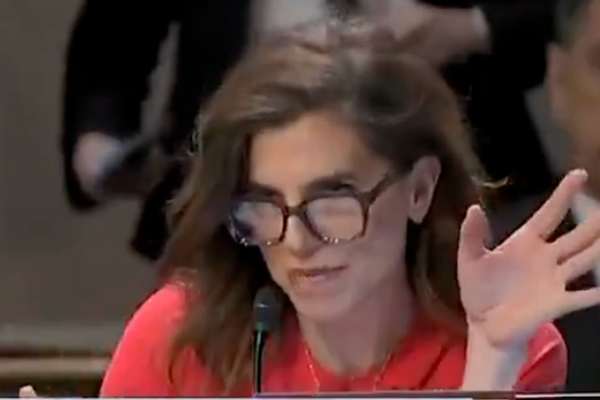
The Victorian government has begun the search for partners to redevelop a huge parcel of land near Melbourne’s CBD, as it approved the construction of seven high-rise apartment towers in the eastern suburbs.
The premier, Jacinta Allan, on Monday announced the government had invited expressions of interest from private sector, industry and investors to turn the 13.5-hectare (33.4-acre) site in North Melbourne, two kilometres north of Melbourne’s CBD, into a new housing precinct dubbed Arden.
“We want to see the best, innovative ideas about how we can build 20,000 more homes on the Arden site, as well as to look at other commercial opportunities to create and support jobs in this area,” Allan told reporters in the neighbouring suburb of Kensington.
Meanwhile, on the other side of the city, the planning minister, Sonya Kilkenny, announced the approval of the Box Hill Central North master plan, which will see 1,700 new homes built over seven apartment towers ranging from 19 to 50 storeys tall.
Four of the apartment towers will surpass Box Hill’s tallest building, the Sky One apartment tower, which at 36 storeys is also the tallest suburban Melbourne building.
Kilkenny said the $1.57bn project aligns with the government’s “long-term vision” for Box Hill, which is the end of the $34.5bn Suburban Rail Loop’s east train line.
As part of the rail project, the government has taken over planning controls within a 1.6km radius of each of the stations along the line: Cheltenham, Clayton, Monash, Glen Waverley, Burwood and Box Hill.
The shadow spokesperson for planning, James Newbury, said the approval of the high-rise towers was proof the government “has a plan to attack the character and amenity of Melbourne’s suburbs around the Suburban Rail Loop”.
“These cheap and nasty developments will be a signature of premier Jacinta Allan’s government,” Newbury said.
The Box Hill Central North master plan project was first unveiled by Vicinity Centres in 2020, and was fast-tracked under the government’s development facilitation program, meaning at least 10% of apartments will be affordable housing.
At Arden, the government also has a requirement of 10% affordable housing, as the land is state-owned.
The premier said the government would give “priority” to proposals that prioritise build-to-rent, build-to-sell and shared-equity initiatives, provide key worker housing and “exceed” the 10% requirement.
“[Arden is] about a four minute train ride to Parkville, to the University of Melbourne, the hospital precinct and the biomedical research precinct – a lot of key workers are needed to go in and out of that area every single day,” Allan said.
“So we want to see key workers prioritised and social and affordable housing prioritised.”
According to EOI documents, the government has separated the land into four “sub-precincts”. The lowest heights and densities are expected in the north of the precinct, increasing closer to the new Arden station, which forms part of the Metro Tunnel.
Walking, cycling and public transport will be “prioritised” in the precinct, along with open space and community infrastructure, including early childhood education facilities, a primary school and local health services. This is expected to be scaled up based on population growth and demand.
The area’s history with flash flooding has also been considered, with a requirement for an integrated stormwater management system to manage the risk.
Jago Dodson, a professor of urban policy at RMIT University in Melbourne, said that based on the EOI documents, it appeared the government had “learned” from mistakes made in previous urban renewal projects, such as the Docklands and Fishermans Bend.
“We are fortunate that at the time the precinct was being considered so was the Metro Tunnel and planning for both was done from the outset,” he said, unlike Fishermans Bend, whereby there was really no consideration to the transport infrastructure that would be necessary for a precinct of that size, which is about four times the size of Arden in terms of expected population.”
He said the same lesson had also been applied to the Suburban Rail Loop, where precinct design and tunnel construction was being planned “hand in hand”.
Dodson said it was also “good to see” that the government would continue to have a “ownership role” in the Arden precinct, unlike the Docklands, where largely state-owned land was “sold off” and planning was developer-led.
“There’s clearly some learning gone on since that episode,” he said.
The government had initially planned to use some of the land at Arden to create a new medical precinct, including new campuses for the Royal Melbourne and Royal Women’s hospitals, but this was scrapped in the May budget, due to “electromagnetic interference” from the new station.
The EOI documents show that the Arden Structure Plan was “prepared on the assumption that there would be a new publicly funded hospital within the Arden Precinct”, but it was now being built at Parkville and asked for bidders to consider the “change”.







